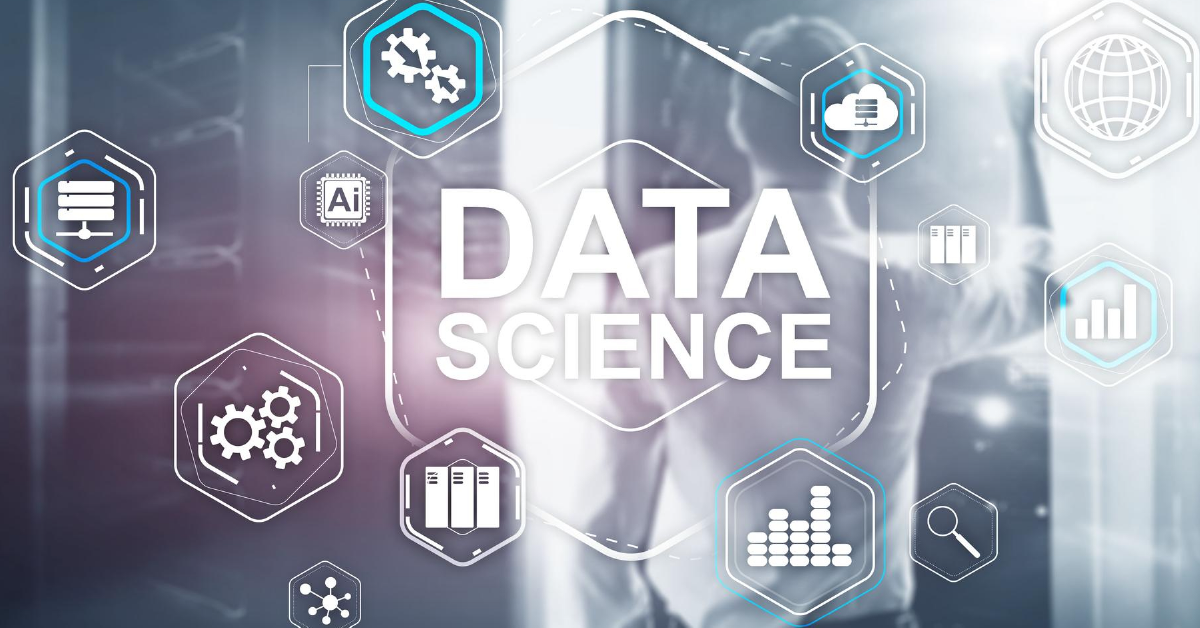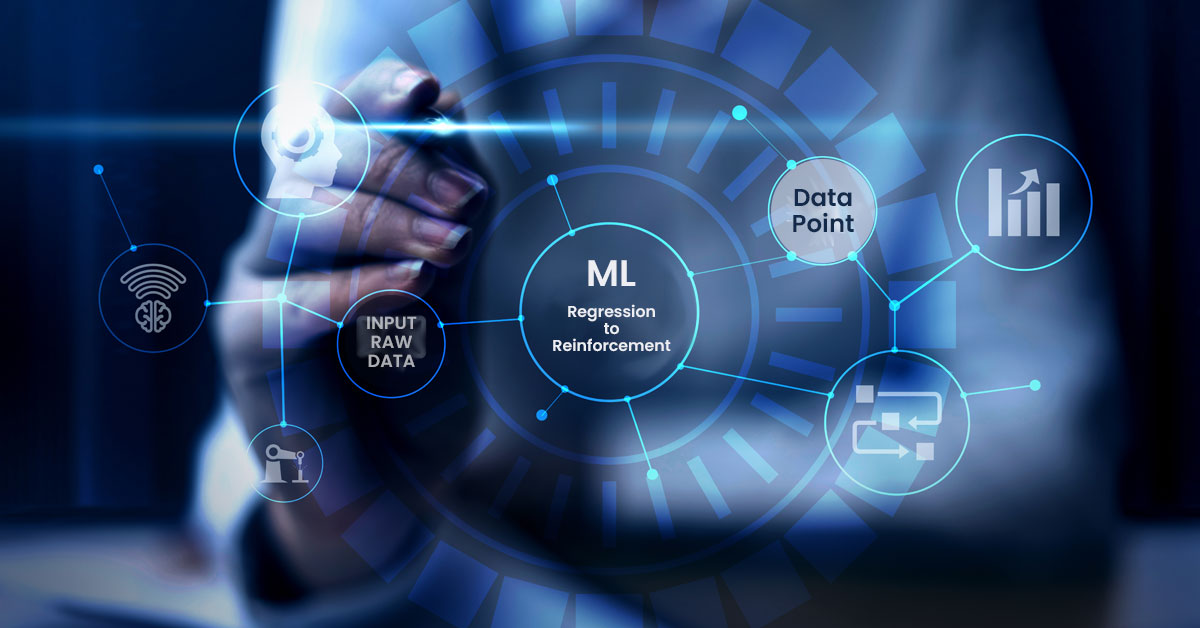Navigating the Complex Path of AI Evolution

5 min read
AI is currently the focus of thousands of developers and data scientists. Since more and more amazing discoveries are made every day, progress is happening more quickly. It has caused great uncertainty over the current state of AI technology and its potential future applications.
Over the past few decades, artificial intelligence (AI) has advanced quickly, changing many industries and how we live and work. Businesses and individuals must be able to successfully traverse the challenging route of AI evolution as the technology develops. However, navigating the intricate way of AI evolution cannot be easy. Now, let’s explore the blog as we look at the many stages of AI development.
How has Artificial Intelligence evolved?
Artificial Intelligence (AI) has undertaken a remarkable journey later its inception. Artificial Intelligence originated in the 1950s when computer science developers set out on an ambitious mission to build robots that might replicate human intelligence. The field has rapidly advanced over the next decades, resulting in the integration of AI across a wide range of industries, including banking, healthcare, and transportation.
A Brief Review of AI History from Turing to the Present
The inception of AI can be traced back to the 1950s, marked by Alan Turing’s innovative work, where he introduced the Turing Test to assess a machine’s ability to replicate human intelligence. AI research took off in the 1960s, especially after John McCarthy developed LISP, the first AI programming language. The development of expert systems in the 1970s and 1980s was made possible by emphasizing rule-based structures and symbolic reasoning in early AI systems during this era.
The 1990s saw a major development in artificial intelligence (AI), with a shift toward machine learning and data-driven approaches brought about by improvements in computing power and the availability of digital data. During this time, neural networks gained prominence, and support vector machines were introduced. It allowed AI systems to learn from data, which improved their performance and flexibility. In the 2000s, artificial intelligence (AI) research expanded into various fields, including robotics, computer vision, and natural language processing. It helped pave the way for the current AI revolution.
How have Technological Advancements Shaped The Evolution of AI?
It is essential to examine the technical developments that have advanced the field of artificial intelligence to trace its evolutionary history. Machine learning, particularly the development of deep learning, has seen some significant advancements. With this AI model shift, algorithms can recognize complex patterns and make decisions without explicit programming, revolutionizing fields like natural language processing, image and speech recognition, and recommendation systems. In addition, the amalgamation of artificial intelligence and big data has demonstrated innovative effects, permitting computers to handle extensive datasets expeditiously and derive significant insights, thus ameliorating decision-making procedures.
Significant advancements have also been made in natural language processing (NLP), which enables machines to understand, interpret, and produce language similar to that of humans. As a result, highly developed chatbots, virtual assistants, and language translation technologies have been developed, enabling more naturalistic communication between humans and machines. Furthermore, developments in computer vision have given AI systems the capacity to understand and grasp visual data, impacting various industries like transportation, security, and healthcare.
Robotics, autonomous systems, and strategic decision-making have all benefited greatly from the advent of reinforcement learning, a pattern in which algorithms learn by making mistakes. Explainable AI (XAI) has gained significance in response to the increasing complexity of AI systems. It focuses on making algorithms comprehensible and visible, resolving issues with accountability, prejudice, and ethical considerations.
In addition, fusing AI with edge computing is leading in a new era of real-time processing and decision-making closer to the data source. AI and quantum computing can solve complicated problems tenfold quicker than traditional computers, which might transform activities like pattern recognition and optimization. Another important development is Transfer Learning, which allows AI models to apply the knowledge they have learned to one task to another, even if they are unrelated. This examination of technical developments provides a thorough picture of how artificial intelligence (AI) has developed, opening up new avenues for research and applications in various fields. The dynamic aspect of this quickly growing area is highlighted by the ongoing interaction between technical innovation and AI development, which influences the creation of intelligent systems and how they will be unified into our daily lives.
Navigating the Complex Path of AI Evolution
Businesses and individuals must implement the following tactics to navigate the challenging path of AI evolution successfully:
-
Stay Informed
Being up-to-date with the latest advancements in AI is essential because the area is continually growing. Stay updated on the latest trends and breakthroughs in AI by following industry leaders, attending conferences and webinars, and participating in online communities.
-
Understand Your Needs
It is essential to understand your unique requirements and objectives before implementing AI solutions. Determine the areas in which AI can improve your personal or professional life. Determine the possible advantages and disadvantages of implementing AI technologies by doing a thorough analysis.
-
Develop a Data Strategy
The energy source for AI systems is data. Development of a strong data strategy is necessary for execution to be successful. Make sure the high-quality data you have access to is representative, unbiased, and varied. Adopt data governance procedures to protect the security and integrity of your data.
-
Collaborate with Experts
The field of artificial intelligence is diverse and demands knowledge in several areas. Utilize the knowledge and abilities of specialists in domain-specific fields, machine learning, and data science by working together. As AI evolves, having a diverse staff can make it easier for you to manage the challenges.
-
Address Ethical Considerations
Taking ethical issues into account is essential as AI technology develops. Create rules and regulations about transparency, fairness, and data privacy. Make sure your AI systems answer for their actions and offer justifications.
-
Invest in Continuous Learning
Maintaining current knowledge in the rapidly evolving field of artificial intelligence necessitates continuous learning. Encourage your employees to upskill and invest in training programs so they can keep current on the newest advancements in artificial intelligence. Encourage your company to experiment and be innovative to accelerate the adoption of AI.
What Lies Ahead in the Future for Artificial Intelligence?
Focus shifts to the frontier of artificial intelligence (AI), where we consider the novel concepts and upcoming developments that will likely shape the field’s future. A significant trend in response to the increasing call for transparency in AI decision-making is explainable AI (XAI). Understanding and having faith in AI-generated decision’ logic is vital as these systems become increasingly interwoven into our daily lives. The emergence of XAI helps resolve issues with accountability and bias while improving the interpretability of AI results and encouraging ethical application and trust.
Federated Learning prioritizes privacy in AI systems and is a significant participant in the changing field. Using a decentralized machine learning approach, privacy laws can be adhered to while training models across numerous devices or servers that store local data. It also creates the groundwork for cooperative model building among heterogeneous actors, promoting security and inclusivity in the AI ecosystem.
The convergence of AI and Edge Computing indicates a fundamental change in deployment tactics. Edge Computing brings processing closer to data sources, reducing latency and facilitating real-time decision-making when prompt replies are essential. This combination can revolutionize the efficiency and responsiveness of intelligent systems, with significant implications for robotics, the Internet of Things (IoT), and other businesses requiring low-latency processing applications.
The idea of artificial general intelligence (AGI) has a significant impact on the field of AI. In contrast to narrow or specialized AI, artificial general intelligence (AGI) aims to create machines that can think like humans and complete any intellectual work. Thoughts of AGI provoke thoughtful consideration of the social, moral, and financial ramifications of creating extremely autonomous systems, even though it is still an idealistic aim. Given the advanced nature of artificial intelligence, it is important to carefully evaluate the ethical norms and obligations that come with it.
Understanding these potential future developments is essential to preparing for the rapidly changing AI landscape. Keeping up with these trends helps us to handle the hurdles and take advantage of the opportunities that lie ahead, as AI continues to transform industries and redefine human connection with technology. Explainable models, federated learning, edge computing, and the idea of AGI represent a turning point in the AI evolution, where ethical and responsible action will be important in determining the direction the technology takes going forward. Accepting these opportunities as a group helps create an AI future consistent with our social goals and values.
Conclusion
Understanding AI’s historical background, technological developments, ethical issues, present situation, opportunities, difficulties, and prospects is essential for navigating this complicated evolutionary path. Organizations and people may embrace the power of AI while ensuring its responsible deployment by being proactive and knowledgeable about these issues. While keeping a close eye on ethical issues and the effects artificial intelligence (AI) will have on society, let’s embrace AI’s possibilities as we proceed on this journey.
Published: December 21st, 2023





